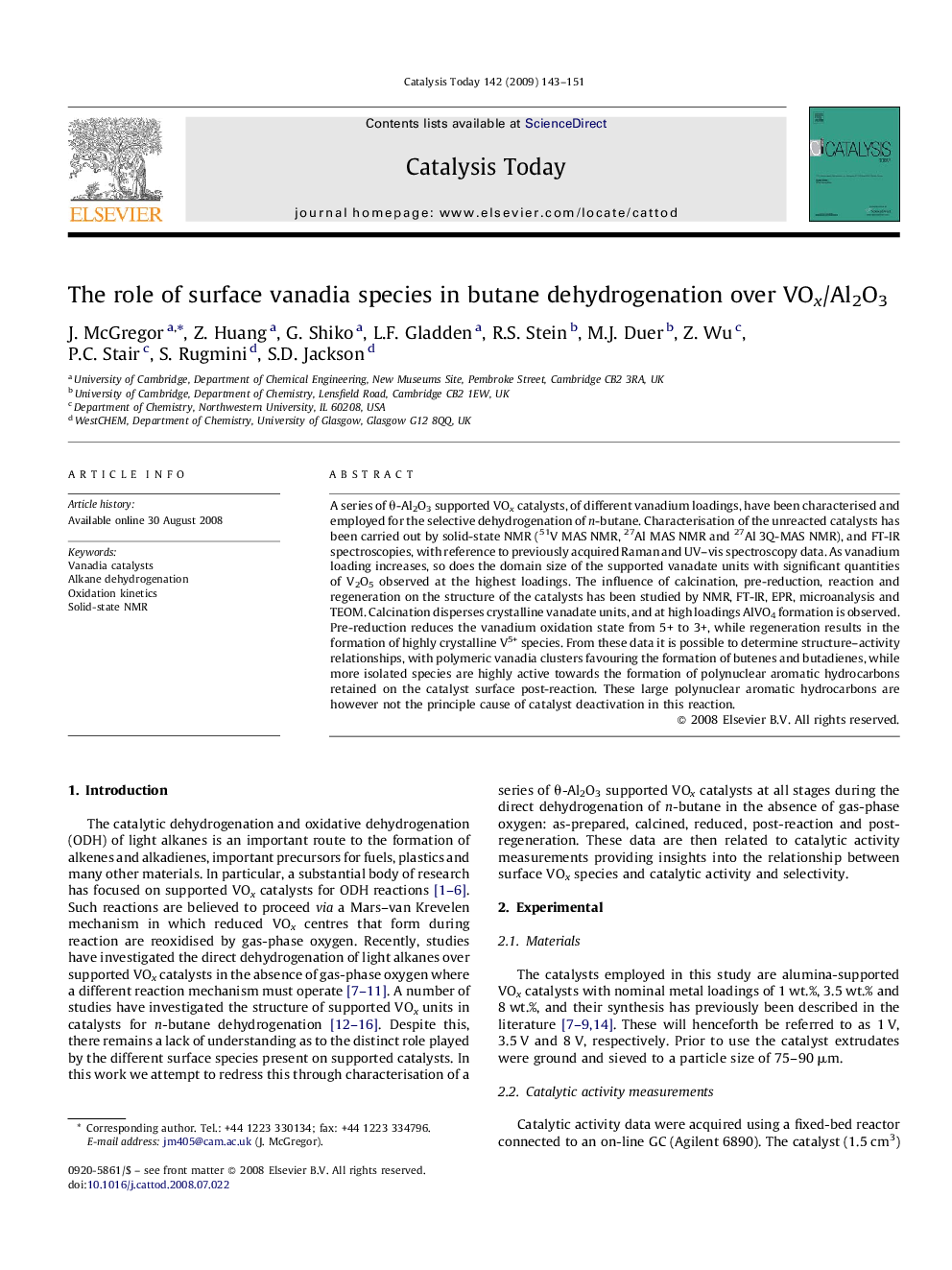| Article ID | Journal | Published Year | Pages | File Type |
|---|---|---|---|---|
| 57429 | Catalysis Today | 2009 | 9 Pages |
A series of θ-Al2O3 supported VOx catalysts, of different vanadium loadings, have been characterised and employed for the selective dehydrogenation of n-butane. Characterisation of the unreacted catalysts has been carried out by solid-state NMR (51V MAS NMR, 27Al MAS NMR and 27Al 3Q-MAS NMR), and FT-IR spectroscopies, with reference to previously acquired Raman and UV–vis spectroscopy data. As vanadium loading increases, so does the domain size of the supported vanadate units with significant quantities of V2O5 observed at the highest loadings. The influence of calcination, pre-reduction, reaction and regeneration on the structure of the catalysts has been studied by NMR, FT-IR, EPR, microanalysis and TEOM. Calcination disperses crystalline vanadate units, and at high loadings AlVO4 formation is observed. Pre-reduction reduces the vanadium oxidation state from 5+ to 3+, while regeneration results in the formation of highly crystalline V5+ species. From these data it is possible to determine structure–activity relationships, with polymeric vanadia clusters favouring the formation of butenes and butadienes, while more isolated species are highly active towards the formation of polynuclear aromatic hydrocarbons retained on the catalyst surface post-reaction. These large polynuclear aromatic hydrocarbons are however not the principle cause of catalyst deactivation in this reaction.
